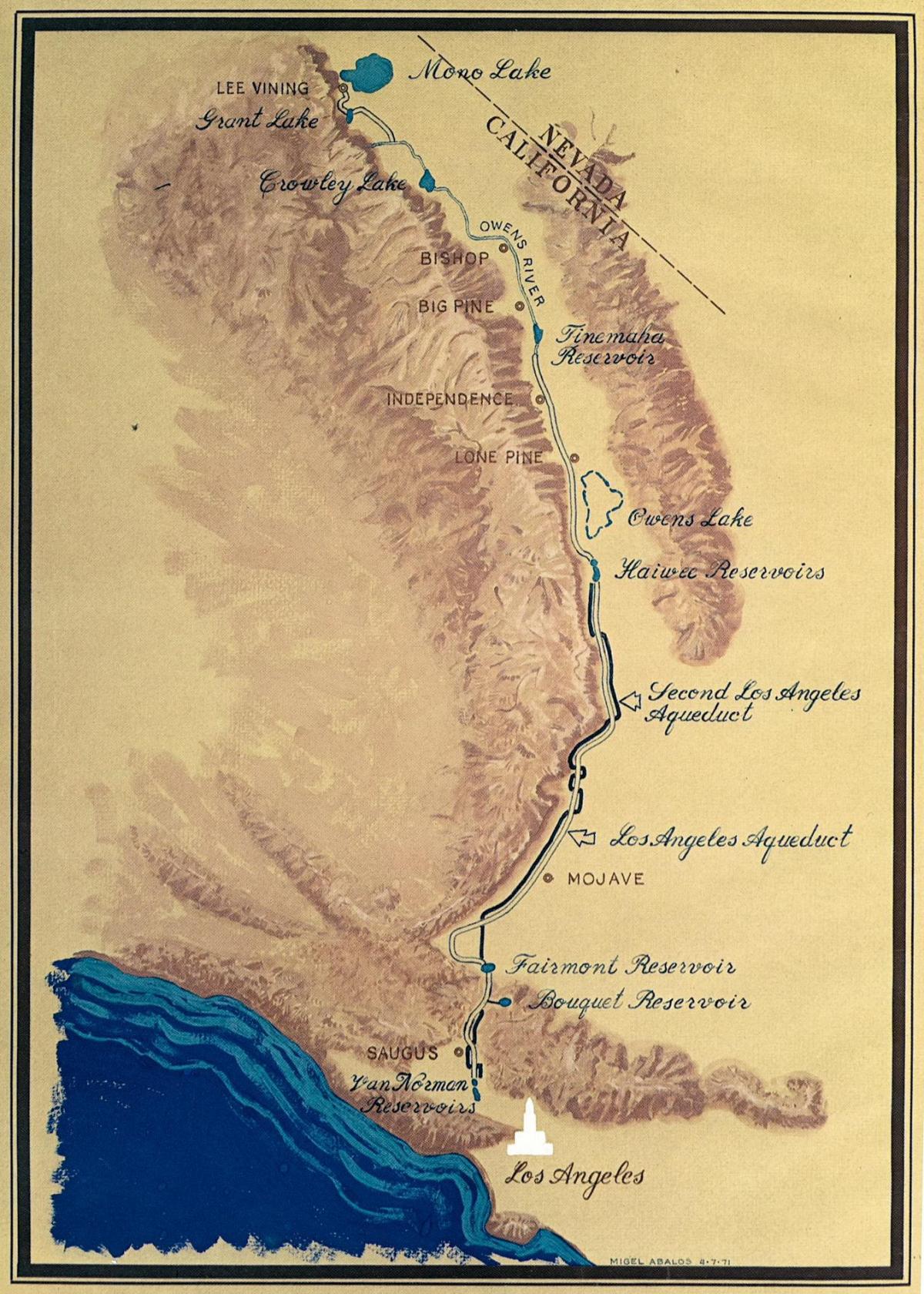search
Los Angeles aqueduct map
Map of Los Angeles aqueduct. Los Angeles aqueduct map (California - USA) to print. Los Angeles aqueduct map (California - USA) to download. The population in Los Angeles was growing rapidly at the turn of the century, and the demand for water in this semi-arid region was critical. In 1904, three Los Angeles engineers - William Mulholland, Frederick Eaton and J.B. Lippincott - developed a plan for future sources of water for the thirsty city (Los Angeles aqueduct map). The men recommended construction of a 233-mile-long aqueduct from the Owens River to Los Angeles. Faced with a prolonged drought at the time, citizens approved a $23 million bond issue (roughly equivalent to $1.5 billion today) to build the aqueduct.
In the early 20th century, efforts to channel water from the eastern slopes of the Sierra Nevada to Los Angeles and the surrounding region culminated in the building of the Los Angeles aqueduct map, completed in 1913. The population of Los Angeles was by then around 300,000; the aqueduct supplied it with enough water for millions, and enabled the explosive growth that would characterize the region in the decades to come.
The most visible part of the Los Angeles aqueduct map to Angelenos is the Cascades, where Eastern Sierra snowmelt water emerges into the city. Located at the westernmost extremity of the San Gabriel Mountains, the cascades feature the termini of the century-old Los Angeles aqueduct (the shorter, zig-zagging channel on the left) and the 43-year-old Second Los Angeles aqueduct (the long channel on the right). The former was where the Aqueduct chief engineer William Mulholland told mayor Henry Rose, "There it is, take it" at the opening ceremonies 100 years ago this week.


